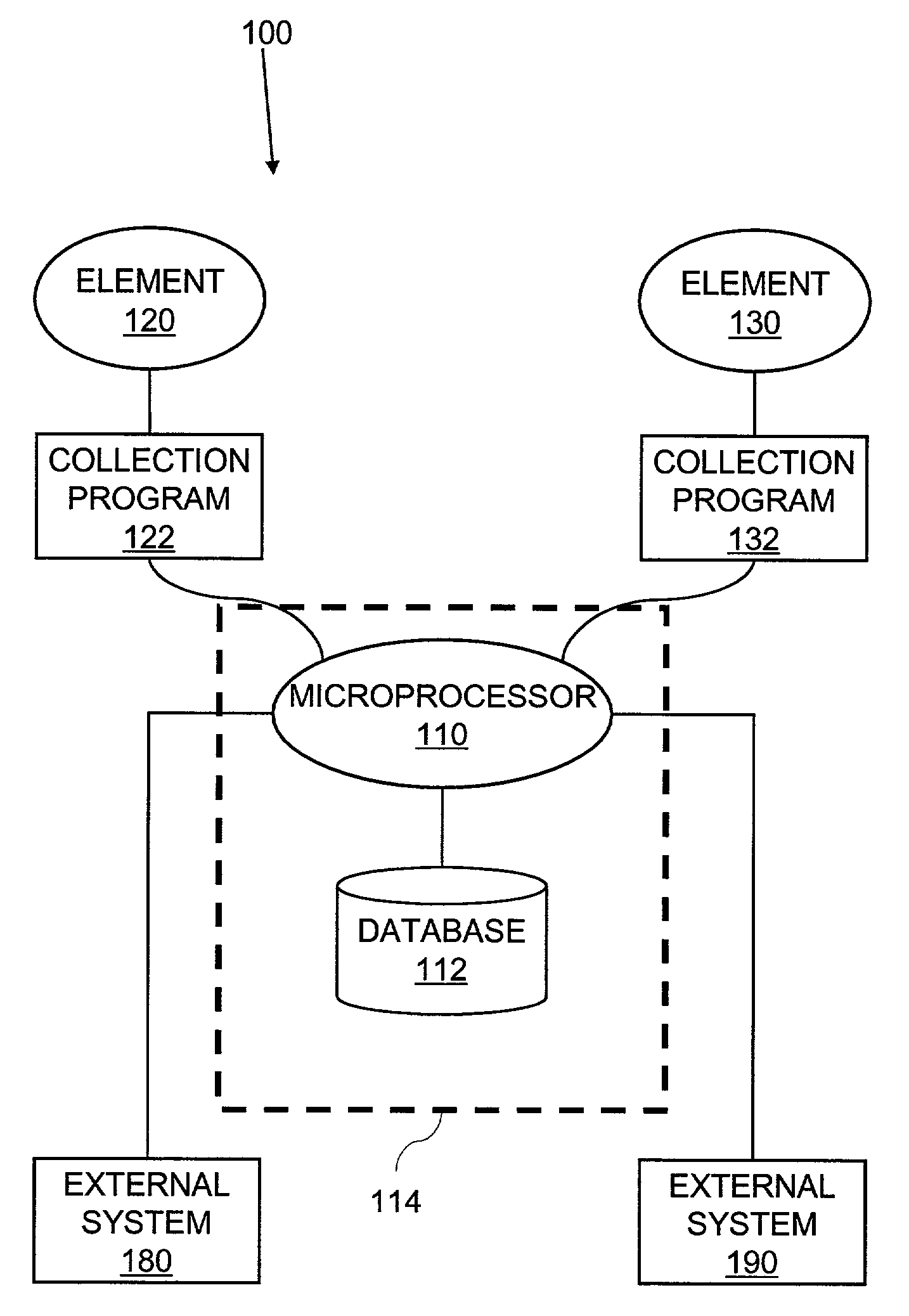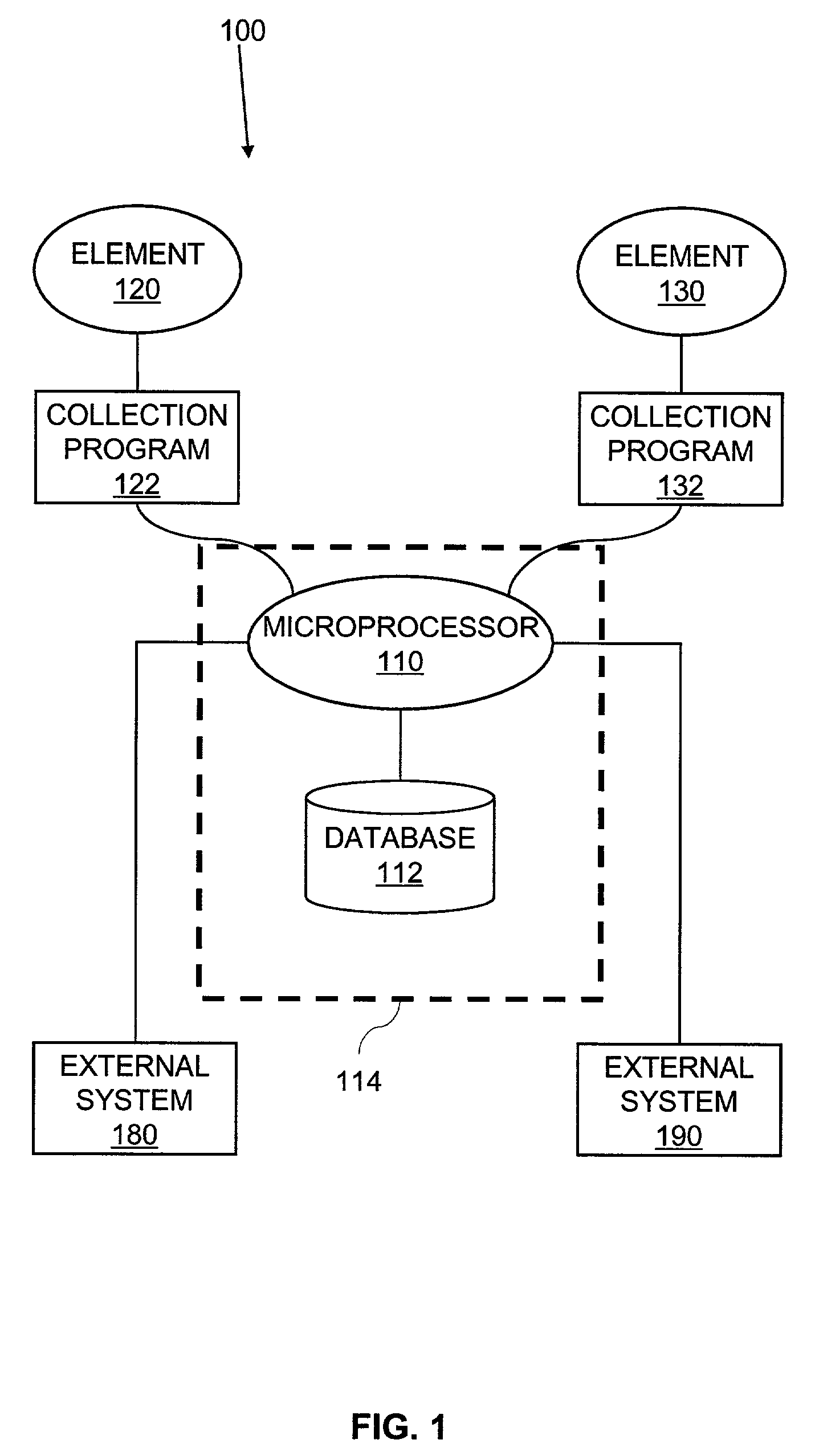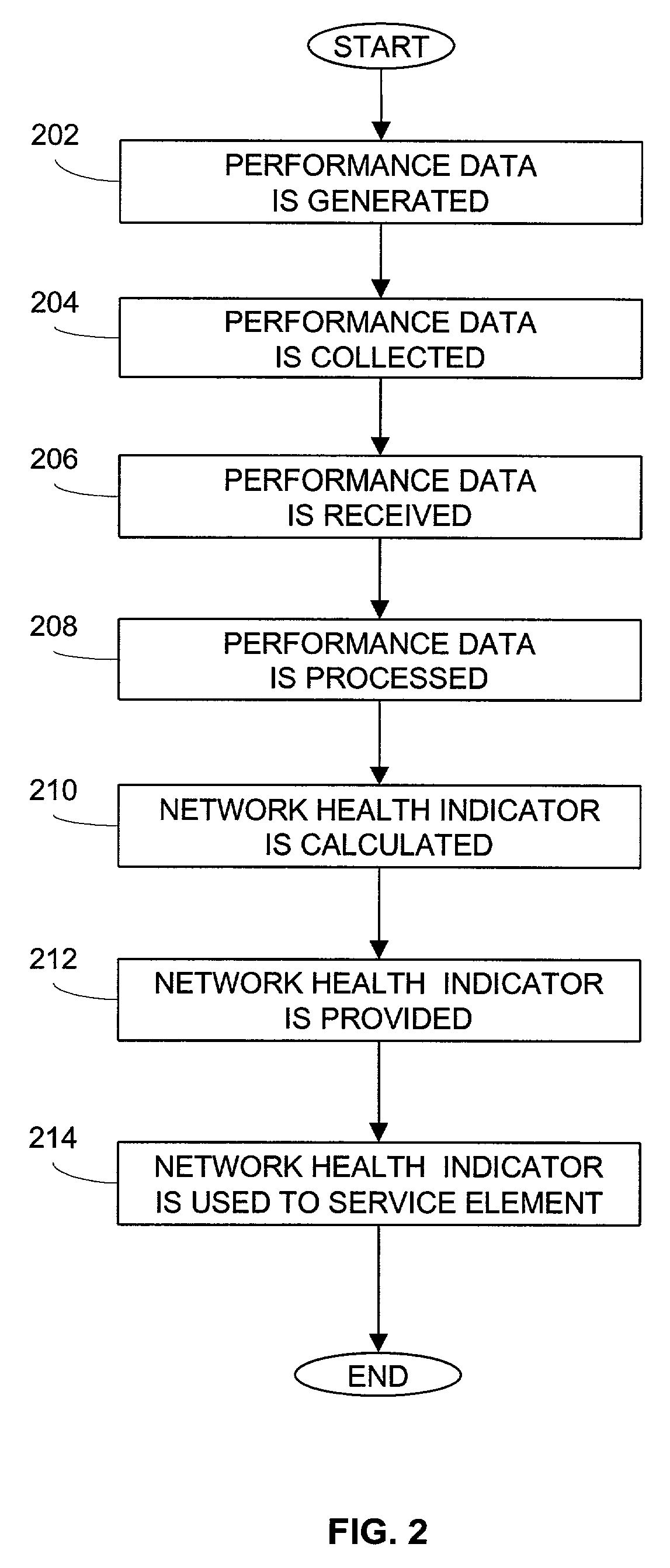System and method for determining service requirements of network elements
- Summary
- Abstract
- Description
- Claims
- Application Information
AI Technical Summary
Benefits of technology
Problems solved by technology
Method used
Image
Examples
Embodiment Construction
[0022]FIG. 1 is a schematic diagram showing a system architecture of an exemplary implementation of an embodiment of the invention. Network 100 has many elements, which include elements 120 and 130. It must be understood that network elements 120 and 130 are representative of a much larger number of network elements that make up network 100. Microprocessor 110 is in communication with each of the network elements, including elements 120 and 130. Database 112 is accessible by microprocessor 110. Preferably, both microprocessor 110 and database 112 are part of the same host computer 114 that is adapted to implement the present invention. However, database 112 may be stored on a separate computer in communication with microprocessor 110.
[0023]Collection program 122 is adapted to collect performance data from element 120 and to provide the performance data to microprocessor 110. Similarly, collection program 132 is adapted to collect performance data from element 130 and to provide the ...
PUM
 Login to View More
Login to View More Abstract
Description
Claims
Application Information
 Login to View More
Login to View More - R&D
- Intellectual Property
- Life Sciences
- Materials
- Tech Scout
- Unparalleled Data Quality
- Higher Quality Content
- 60% Fewer Hallucinations
Browse by: Latest US Patents, China's latest patents, Technical Efficacy Thesaurus, Application Domain, Technology Topic, Popular Technical Reports.
© 2025 PatSnap. All rights reserved.Legal|Privacy policy|Modern Slavery Act Transparency Statement|Sitemap|About US| Contact US: help@patsnap.com



